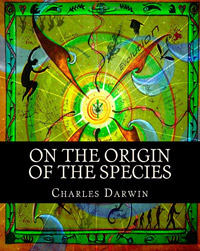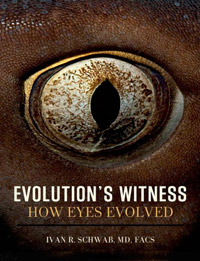In this week’s eSkeptic:

NEW ON SKEPTICBLOG.ORG
How to Learn to Think Like a Scientist (Without Being a Geek)
In this week’s Skepticblog, Michael Shermer shares his experience of what it was like teaching a course in Skepticism 101.
NEW ON MICHAELSHERMER.COM
Aunt Millie’s Mind
In Michael Shermer’s July “Skeptic” column for Scientific American, he reminds us that the hypothesis that the brain creates consciousness has vastly more evidence for it than the hypothesis that consciousness creates the brain.

SKEPTICALITY EPISODE 186
Interviews with Todd Stiefel and Mark Edward
In this episode of Skepticality, Derek sits down with Todd Stiefel to talk about his involvement in recent, and upcoming secular public events and campaigns. His latest is working to collect one million dollars (or more) for the Leukemia and Lymphoma Society through the Foundation Beyond Belief. Also in this episode, Derek catches up with Mark Edward, a well known mentalist, about his new book, Psychic Blues, and the experiences which led him to write the book and his thoughts on the varied types of current psychics who are operating out there today, and through the recent past.
About this week’s eSkeptic
In this week’s eSkeptic, Donald R. Prothero reviews Ivan R. Schwab book, Evolution’s Witness: How Eyes Evolved (Oxford University Press, New York, 2012, ISBN 978-0-19-536974-8). Read Prothero’s bio after the article.
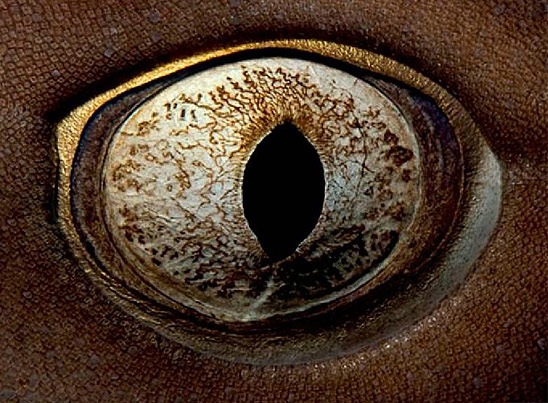
How the Blind Watchmaker
Made Eyes
by Donald R. Prothero
Since the days of Darwin, eyes and evolution have been an irresistible topic for scientists and amateur authors alike. British biologist St. George Jackson Mivart was initially a supporter of Darwin, but when his Catholic religion caused conflict with Thomas Henry Huxley in 1871, he changed to a critic. Mivart’s critique focused on the issue of the perfection of the human eye and how he could not fathom how it could have evolved by natural selection and random chance (a point still raised by creationists today who know nothing about comparative biology).
In later editions of On the Origin of Species, Darwin specifically addressed Mivart’s criticism and carefully explained how the incipient stages of complex structures like the eye could be useful, and could have evolved by small steps; it did not require a giant leap to the complexity to develop the human eye. As Darwin first showed, nature is full of examples of every kind of photoreceptor, from simple light-sensitive cells to eyespots to simple eyes with no lenses, to a variety of solutions of seeing with more and more complex eyes. Once you arrange these solutions in an array, it is only a small step from one to the next, more complex eye. (Indeed, many animals actually show this transition during their embryonic development as their eyes change, and in some organisms, the eyes develop differently in males and females). In fact, the passages where Darwin talks about the eye are one of the most frequently “quote mined” by creationists trying to distort Darwin’s meaning, because they quote only the beginning of the paragraph where Darwin is setting up the creationist position in order to shoot it down the in the rest of the passage (which creationists never quote). Here is the first section that creationists quote (On the Origin of Species, 6th ed., 1872, 143–144):
To suppose that the eye, with all its inimitable contrivances for adjusting the focus to different distances, for admitting different amounts of light, and for the correction of spherical and chromatic aberration, could have been formed by natural selection, seems, I freely confess, absurd in the highest possible degree.
Here is the rest of the quote that creationists conveniently leave out:
Yet reason tells me, that if numerous gradations from a perfect and complex eye to one very imperfect and simple, each grade being useful to its possessor, can be shown to exist; if further, the eye does vary ever so slightly, and the variations be inherited, which is certainly the case; and if any variation or modification in the organ be ever useful to an animal under changing conditions of life, then the difficulty of believing that a perfect and complex eye could be formed by natural selection, though insuperable by our imagination, can hardly be considered real. How a nerve comes to be sensitive to light, hardly concerns us more than how life itself first originated; but I may remark that several facts make me suspect that any sensitive nerve may be rendered sensitive to light, and likewise to those coarser vibrations of the air which produce sound.
The rest of Darwin’s chapter goes into great depth describing the full range of photoreceptor solutions in the animal kingdom, which creationists also conveniently fail to address.
Fast-forward 153 years later to the culmination of this line of argument, represented by Ivan Schwab’s outstanding book Evolution’s Witness: How Eyes Evolved. There have been a number of scientific papers that have expanded on Darwin’s comparative sequence of ocular solutions, but none in the beautiful full-color coffee-table book format that extensively reviews photoreception across all of biology, as does Schwab’s book. Schwab is a professor of ophthalmology at University of California Davis, so he knows eyes in a way that few biologists do, but he also takes great trouble to study and image photoreceptors from nearly every group of living organisms. The book shows not only spectacular color photographs of a wide range of organisms and close-ups of their eyes, but many images of histological sections through the eyes and head (done by Richard Dubielzig, DVM), color reconstructions of prehistoric animals by renowned paleoartist John Sibbick, and microphotography of eye histology. Detailed discussions of the eye anatomy of many key living organisms are provided, along with speculation about the eye anatomy of fossils with excellent preservation. Some, like trilobites, have preserved their crystal calcite lenses unaltered, so we can actually see what they could see. The anatomical discussion might be heavy going for those without any background in biology, but the author provides excellent diagrams and definitions of every anatomical term, plus a glossary, so those who wish to dig in and learn the material will be rewarded.
The book also attempts not just a comparative biology exercise, but a fully chronological account of the geological factors that were in play when each type of eye arose prehistorically. Thus, rather than running through the full gamut of eye types in, say, phylum Arthropoda or phylum Chordata, the chapters jump from the kinds of eyes that existed in invertebrates of a given geological period to the contemporary vertebrates, and back again. This exposition may be a little hard to follow for some readers, but it does allow one to see when each type of eye arose and under what geological conditions. Thus, we can better understand, for example, how 300 m.y. old Carboniferous dragonflies with wingspans almost 3 feet across had eyes the size of golf balls! They, like the 9-foot Arthropleura (a sowbug relative on steroids) or the foot-long cockroaches of this period, were able to grow so large because atmospheric oxygen levels at that time were much higher; oxygen is a critical limiting factor not only for arthropod growth, but especially for eye development. Elsewhere, he describes the amazing dolphin-like marine reptiles known as ichthyosaurs, some of which had eyes the size of beach balls, the largest eyes ever known. These animals apparently were divers into the dark depths of the oceans where they must have hunted prey (possibly large squid like modern sperm whales hunt) that live at such depths.
Schwab begins at the beginning of the simplest life forms, discussing the chemicals and pigments found even in bacteria and algae, and how many (besides chlorophyll) are sensitive to light. He shows how some non-photosynthetic light-sensitive pigments have non-light-sensitive precursors, and evolved before the advent of photoreceptors, then were later co-opted for light sensitivity. Schwab goes into the recent research on evolutionary development of eyes, and how certain genes turn on or off expression of certain eye features, or even the entire eye. He reminds us how many animals have no need for sensitivity to light at all, let alone photoreceptors or eyes, and dispels our anthropomorphic notion that eyes are essential to evolutionary success.
In discussing the appearance of the first real eyes of the trilobites in the Cambrian, Schwab does not make the mistake that Andrew Parker made in his 2004 book In the Blink of an Eye: How Vision Caused the Big Bang of Evolution. Parker’s book was excoriated in the scientific community, not only for its execrable writing style and lack of proper references, but for the even simpler reason that the “Cambrian explosion” was no “explosion” (it took at least 20–80 million years in a series of steps) and that the trilobites and their eyes were one of the last events in this long slow process, so they are unlikely to have caused anything more than the late radiation of more trilobites.
Finally, in his review of cephalopod eyes, Schwab shows how the structure of the fluid-filled eyeball of an octopus evolved independently in that lineage and in the vertebrates—but the octopus eye is actually designed better than our eye! It has no “blind spot” in the retina caused by the exit of the optic nerve, and its layers of photoreceptors are not buried under several other layers of cells, distorting the vision, as our retinas are. The next time you run into a creationist who rhapsodizes about how beautifully designed nature is, remind them of the flawed construction of our eyes compared to that of an octopus or squid, and ask what that tells them about the Designer!
In a project this large in scope, small errors are bound to creep in, especially in areas far from the author’s expertise in eye anatomy. For example, he mentions the discredited notion that a meteorite impact might have something to do with the great Permian extinction; he follows the controversial idea that turtles are nested within Diapsida; but he retains the outdated notions that mesonychids are closer relatives of whales than hippos and other artiodactyls. These can be forgiven, because the author is making an attempt to reach across disciplines and paint a broad picture in a geological context, and such an effort is hard for anyone, regardless of specialty, to manage.
In the broader sense, the entire book is an outstanding antidote to scientific ignorance and creationist lies. It is beautifully written and illustrated, yet the writing is accessible to anyone with some biology background and a willingness to follow the details carefully. The evidence for evolution screams out at you page after page. Like Darwin did in 1859, Schwab pounds the case home with example after example in a way that no creationist can rebut. Among the overwhelmingly positive reviews the book has received in the professional journals and on the Internet, there are three pathetic one-sentence negative reviews by creationist trolls on the book’s Amazon.com page, which clearly show that they didn’t actually read the book and could not comprehend it. Indeed, one of them admits that he gave a bad review to the book after only reading the “look inside” feature on the Amazon.com site and skimming the few pages that are presented. If that doesn’t summarize creationist “scholarship” in a nutshell, nothing does! ![]()
About the Author of this Review

DR. DONALD R. PROTHERO was Professor of Geology at Occidental College in Los Angeles, and Lecturer in Geobiology at the California Institute of Technology in Pasadena. He earned M.A., M.Phil., and Ph.D. degrees in geological sciences from Columbia University in 1982, and a B.A. in geology and biology (highest honors, Phi Beta Kappa) from the University of California, Riverside. He is currently the author, co-author, editor, or co-editor of 32 books and over 250 scientific papers, including five leading geology textbooks and five trade books as well as edited symposium volumes and other technical works. He is on the editorial board of Skeptic magazine, and in the past has served as an associate or technical editor for Geology, Paleobiology and Journal of Paleontology. He is a Fellow of the Geological Society of America, the Paleontological Society, and the Linnaean Society of London, and has also received fellowships from the Guggenheim Foundation and the National Science Foundation. He has served as the President and Vice President of the Pacific Section of SEPM (Society of Sedimentary Geology), and five years as the Program Chair for the Society of Vertebrate Paleontology. In 1991, he received the Schuchert Award of the Paleontological Society for the outstanding paleontologist under the age of 40. He has also been featured on several television documentaries, including episodes of Paleoworld (BBC), Prehistoric Monsters Revealed (History Channel), Entelodon and Hyaenodon (National Geographic Channel) and Walking with Prehistoric Beasts (BBC). His website is: www.donaldprothero.com. Check out Donald Prothero’s page at Shop Skeptic.
Skeptical perspectives on evolution and Darwin…
-
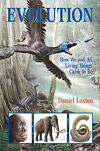 Evolution: How We and All Living Things Came to Be
Evolution: How We and All Living Things Came to Be
Written by Daniel Loxton; illustrated by Daniel Loxton
with Jim W.W. Smith -
Can something as complex and wondrous as the natural world be explained by a simple theory? The answer is YES, and now Evolution explains how in a way that makes it easy to understand. Based on acclaimed articles from Junior Skeptic (Skeptic magazine’s science insert for kids) Evolution is a gorgeous hardcover with dust jacket, packed throughout with dazzling full-color art. This spectacularly illustrated introduction to the theory of evolution takes us from Charles Darwin to modern-day science. Along the way, Evolution answers common questions (and clears up misunderstandings) that sometimes confuse people about the history of life on Earth.
-
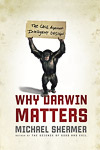 Why Darwin Matters: The Case Against Intelligent Design
Why Darwin Matters: The Case Against Intelligent Design
by Michael Shermer -
Evolution happened, and the theory describing it is one of the most well founded in all of science. Then why do half of all Americans reject it? Michael Shermer defuses the hesitation people have of accepting the theory of evolution by examining what evolution really is, how we know it happened, and how to test it. Dr. Shermer was once an evangelical Christian and a creationist, and is now one of the best-known public intellectuals defending evolutionary theory, so Why Darwin Matters provides readers with an insiders’ guide to the evolution-creation debate, in which he shows why creationism and Intelligent Design are not only bad science, they are bad theology, and why science should be embraced by people of all beliefs.
-
 The Blind Watchmaker: Why the Evidence of Evolution Reveals a Universe Without Design
The Blind Watchmaker: Why the Evidence of Evolution Reveals a Universe Without Design
by Richard Dawkins -
One of the most famous creationist arguments originated with 18th century theologian William Paley who suggested that since a watch should have a maker, the natural world also needed to have one. Just as a watch is too complicated and too functional to have sprung into existence by accident, so too must all living things, with their far greater complexity, be purposefully designed. It was Charles Darwin’s brilliant discovery that put the lie to these arguments. But only Richard Dawkins could have written this eloquent riposte to the creationists…
-
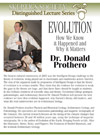 Evolution: How We Know it Happened
Evolution: How We Know it Happened
& Why it Matters
by Dr. Donald R. Prothero -
The hottest cultural controversy of 2005 was the Intelligent Design challenge to the theory of evolution, being played out in classrooms and courtrooms across America. The crux of the argument made by proponents of Intelligent Design is that the theory of evolution is in serious trouble. They claim that the evidence for evolution is weak, the gaps in the theory are huge, and that these flaws should be taught to students. In this brilliant synthesis of scientific data and theory, Occidental College geologist, paleontologist, and evolutionary theorist Dr. Donald Prothero will present the best evidence we have that evolution happened, why Darwin’s theory still matters, and what the real controversies are in evolutionary biology.
Announcing The Amaz!ng Meeting 2012
Southpoint Hotel & Casino, Las Vegas, NV
July 12–15, 2012
THE AMAZ!NG MEETING (TAM) is an annual celebration of science, skepticism and critical thinking. People from all over the world come to TAM each year to share learning, laughs and the skeptical perspective with their fellow skeptics and a host of distinguished guest speakers and panelists.
The James Randi Educational Foundation (JREF) has hosted its annual Amaz!ng Meeting since 2003 as a way to promote science, skepticism and critical thinking about paranormal and supernatural claims to the broader public. TAM has been held in Las Vegas, NV since 2004 and has become the world’s largest gathering of like-minded science-advocates and skeptics.
With yet another incredible lineup of speakers, hands-on workshops, and entertainment, this is sure to be an Amaz!ng Meeting you won’t want to miss! Check out the entire program, and follow @jref on Twitter for the latest #TAM2012 news and announcements.



